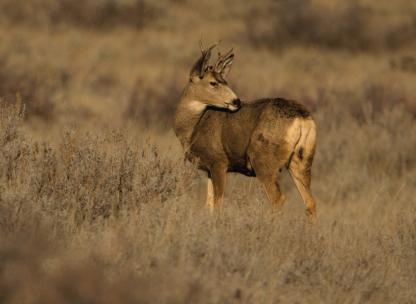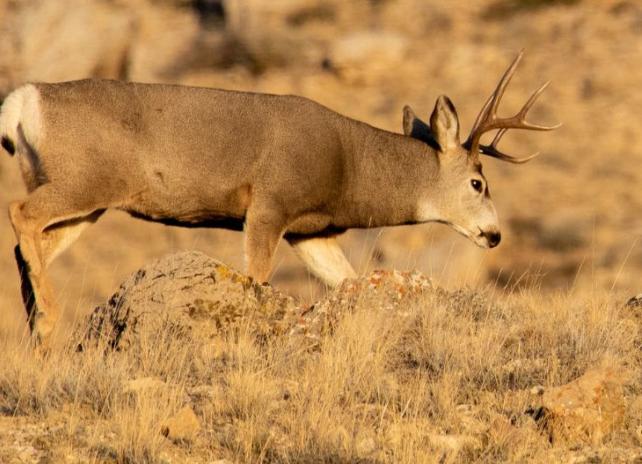Mature mule deer bucks have antlers with main beams that sweep outward and upward, forking once and then forking again. Mature bucks typically have 4 or 5 points on each side, often including brow tines. The antlers are shed and re-grown each year.
The gestation period for pregnant does is 189 to 210 days and typically one or two fawns are born to each doe. Twins are common in does after their first pregnancy. Fawns are born in late May through early July.
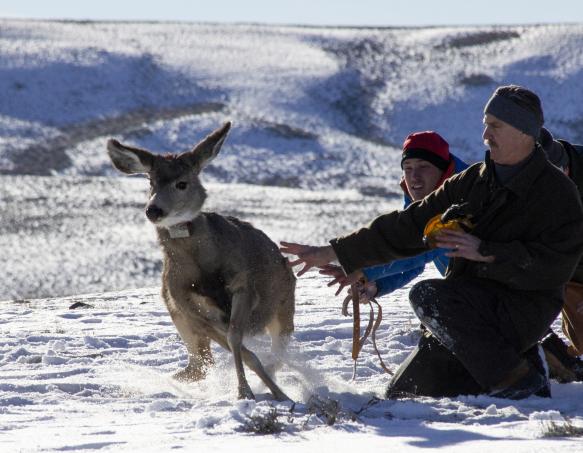
Mule deer management
The Wyoming Game and Fish Department manages mule deer populations through initiatives like the Wyoming Mule Deer Initiative, focusing on habitat restoration and monitoring population health. Public engagement is also important for garnering support for conservation efforts.
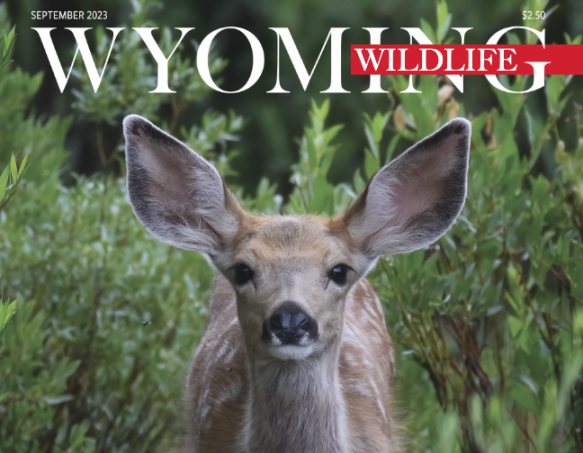
Wyoming Wildlife - Mule Deer Special Edition
Learn more about mule deer in Wyoming in the special mule deer issue of Wyoming Wildlife magazine.
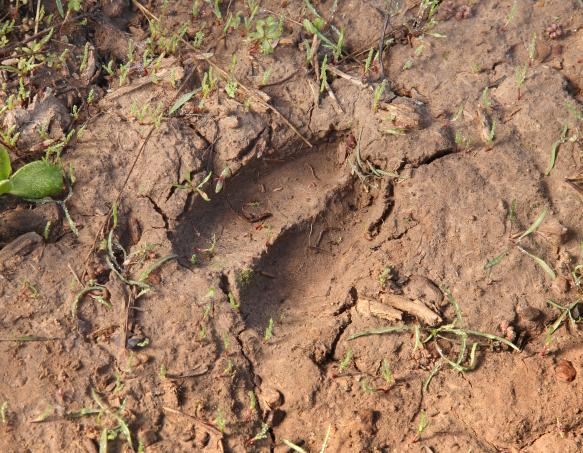
Tracks
Height: 1-4 inches long
Width of track: .75-2.5 inches
Stride length: Walking - 13-26 inches | trotting - 29-56 inches
Heart-shaped
Mule Deer Sounds
Mule deer have slight variations in their vocalizations. They may make Low-pitched vocalizations when not disturbed, snorts of alarm and coughed grunts between males.
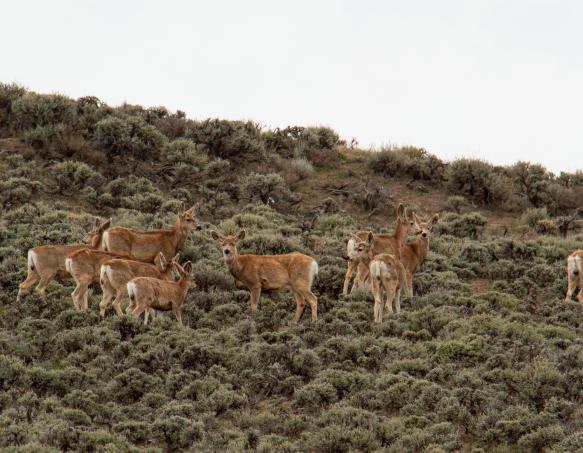
Mule Deer Habitat
Game and Fish focuses on improving mule deer habitat because it has been impacted by extensive drought over the last 25 years, leading to lower survival rates. Wyoming's shrublands, including sagebrush, mountain mahogany, and bitterbrush, provide mule deer with food and cover.
Mule Deer Wyoming Distribution
The mule deer’s native range spans throughout western North America, as far north as the coastal islands of Alaska and as far south as Mexico. In Wyoming, mule deer are found from the lower elevation sagebrush deserts and creek bottoms to above timberline in the mountains. Common habitats range from salt desert shrublands to alpine tundra.
Mule Deer Wyoming Population graph
The estimated statewide population of mule deer sits just under 400,000. Also, the Wyoming Game and Fish Department has increased focus on mule deer conservation through the Mule Deer Initiative, which brings together local stakeholders to develop on the ground actions intended to benefit mule deer in select herds.
Mule Deer Where to find and view
Mule deer can be found in nearly all Wyoming habitats. Viewing opportunities are likely near Saratoga, Cody, Kemmerer, or Newcastle in the winter/fall timeframe.
Game and Fish conservation/management efforts

